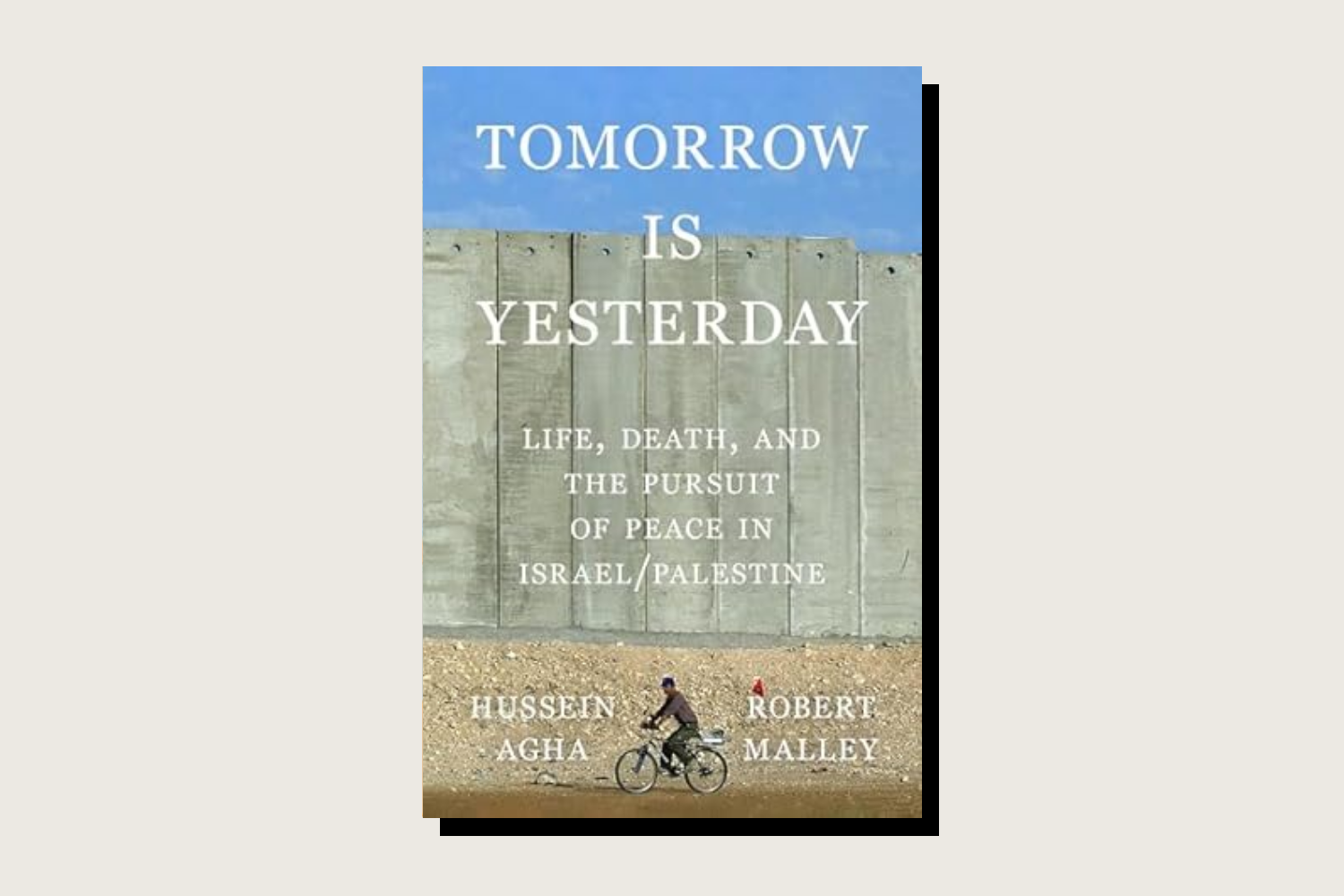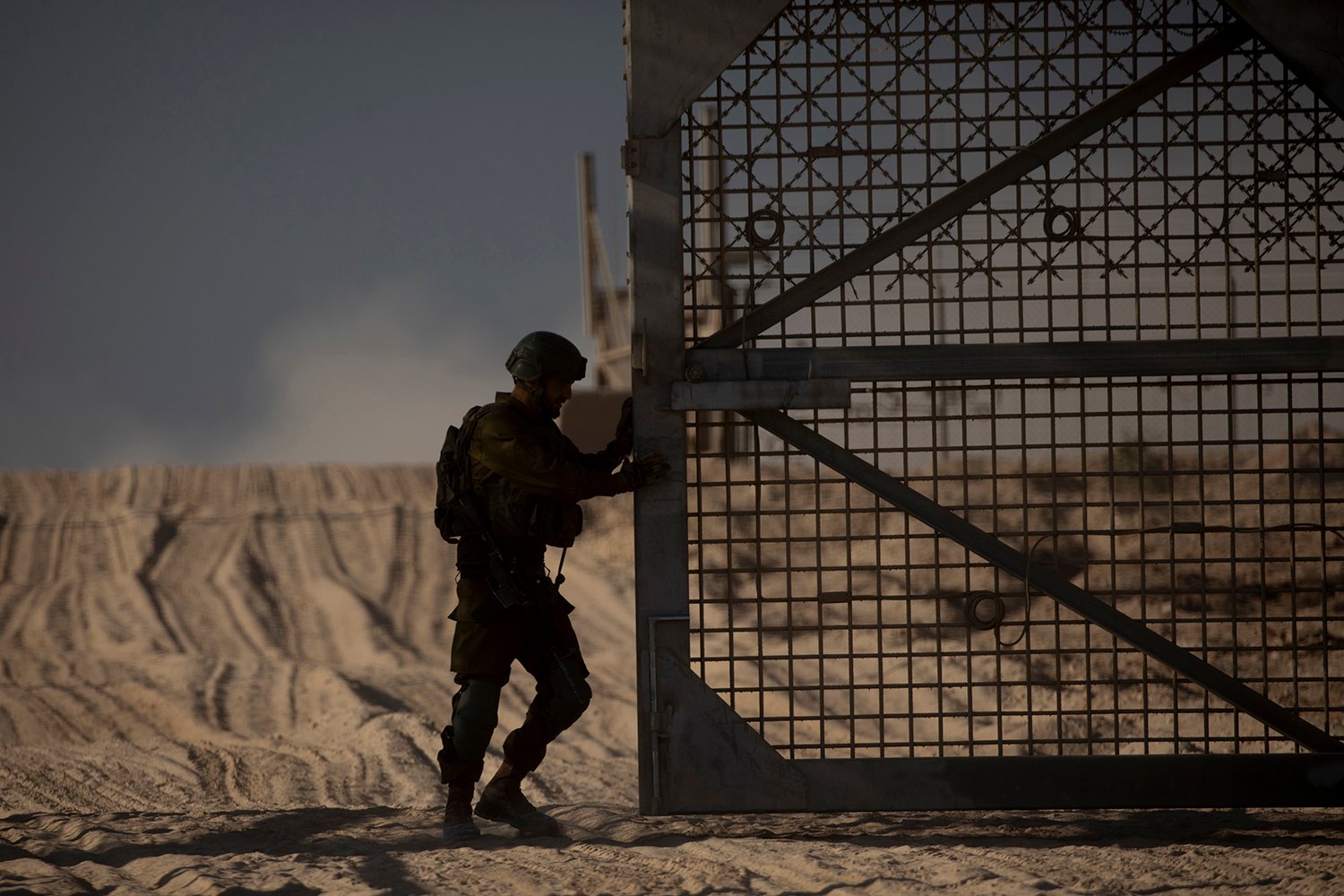Two years since Hamas’s Oct. 7, 2023, attack on Israel and the start of Israel’s seemingly endless retribution campaign against Gaza, several Western nations—including the United Kingdom, France, Canada, and Australia—have announced that they now recognize a Palestinian state. The recognitions represent mounting global outrage over Israel’s war in Gaza, which has led to a human-made famine, the annihilation of most the enclave’s infrastructure, and what a growing chorus of experts describe as genocide.

As Western governments line up to recognize Palestine, however, the Israeli military is continuing its systematic obliteration of Gaza City, block by block, neighborhood by neighborhood, while forcibly displacing its approximately 1 million residents to the south.
The stark contrast between the world’s declarations about a theoretical Palestinian state and Israel’s physical erasure of Palestine’s largest city is both jarring and deeply familiar. This chasm between imagined futures and tangible realities has long been a feature of international diplomacy in Israel/Palestine. It is one of the primary reasons that the two-state solution has failed. U.S. President Donald Trump’s plan for “eternal peace” in the region will likely fail, as well.
Few works do a better job of capturing the chronic dissonance that plagued and ultimately doomed Israeli-Palestinian peacemaking than Tomorrow is Yesterday: Life, Death, and the Pursuit of Peace in Israel/Palestine by Robert Malley and Hussein Agha. Timely and elegantly written, the book is a dyslogy for a peace process built on faulty assumptions and sustained through lies and self-delusion.
Tomorrow is Yesterday is a story in two parts. First, it tackles how and why the Oslo peace process died—along with the two-state solution it was meant to produce. Then, it goes on to explain how their collapse brought us to today’s cataclysmic violence. Agha and Malley, who advised Palestinian and U.S. leaders, respectively, throughout numerous rounds of Israeli-Palestinian negotiations over several decades, would know. I also advised Palestinian leaders in negotiations over a two-state solution, though at a different moment than the authors.
Agha and Malley’s argument is straightforward and persuasive: The two-state solution, despite the broad international consensus it enjoyed, ultimately met its demise at the hands of a defective peace process that ignored the historical and psychological origins of the conflict as well as the vast power asymmetry between Israelis and Palestinians.
-

People stand while holding signs.
-

Children sit on the ground with empty bowls in front of them.
From the outset, Oslo was beset by structural flaws. It misdiagnosed the root causes of the Israeli-Palestinian conflict, which lie not in Israel’s 1967 occupation of the West Bank and Gaza but in the coterminous events of Israel’s creation and Palestinian dispossession in 1948, Agha and Malley argue.
Oslo also lacked an agreed upon endgame and institutionalized the inherent power imbalance between occupier and occupied—all while remaining detached from ordinary people’s hopes and fears. The peace process became the purview of elites and excluded key constituencies such as Palestinian refugees, Israeli settlers, Islamists, and others who maintained an attachment to all the land between the Jordan River and the Mediterranean Sea.
In neglecting the conflict’s core issues and the existential fears embedded within them—for Israeli Jews, the history of persecution and yearning for normalcy and acceptance; for Palestinians, a history of subjugation, erasure, and a longing for justice—Oslo reduced peacemaking to a technical exercise of drawing lines on a map instead of promoting genuine reconciliation between two national groups with competing narratives and claims.
Negotiations—from the fateful Camp David summit in July 2000 to the elaborate but ultimately fruitless Annapolis talks of 2007-2008 and the ill-fated talks led by U.S. Secretary of State John Kerry in 2013-2014—were reduced to a matter of textual or territorial formulations, “a game of words to bridge the divide as America saw it; a clinical allotment of land, sovereignty, and security, purposely decoupled from the emotional baggage of history,” the authors write.
The struggle for Palestinian freedom was likewise distilled to a sterile process of institution building. Few issues better illustrate the power of history—and of its neglect by Oslo’s stewards—than the Gaza Strip. The territory is itself an amalgam of overlapping and mutually reinforcing wounds from 1948, 1967, and 2007 that have been allowed to fester. With two-thirds of its population made up of Nakba refugees and subjected to a suffocating blockade since 2007, Gaza has long been the epicenter of Palestinian resistance as well as episodic outbursts.
The cataclysmic violence on and since Oct. 7, 2023, was therefore neither a surprise nor an aberration, given the explosive pressures simmering just beneath the surface and the inherent inequality of Israeli-Palestinian dynamics. Oct. 7 and its devasting aftermath—to which Malley and Agha devote two full chapters—were, in essence, “history’s revenge.”
The authors offer a sober, dispassionate, and almost clinical assessment of Oct. 7, its antecedents, and aftershocks that is painfully incisive and brutally honest. Israelis and Palestinians responded to events in the ways that we would (or should) expect them to, given their historical baggage, internal political pressures, and their hugely asymmetrical relationship. In the end, “October 7 was Palestinian to the core,” the authors write, just as “Israel’s savage assault on Gaza” was thoroughly Israeli.
Agha and Malley demonstrate an admirable grasp of and sensitivity to the political mindsets, historical narratives, and existential fears of all sides—a remarkable feat for individuals so closely tied to the negotiating parties. In this way, Tomorrow is Yesterday is a treatise on the importance of empathy—not simply in moral terms but, perhaps more crucially, as a practical and analytical tool essential for successful diplomacy and statecraft.
To note that there is a distinct lack of empathy for Palestinians in U.S. politics is not especially controversial, as evidenced by the seemingly limitless capacity of decision-makers in Washington to tolerate, excuse, or actively support the kinds of egregious and meticulously documented Israeli atrocities broadcast on our screens over the last two years.
U.S. officials were overly indulgent of Israeli needs even as they devalued those of Palestinians. American decision-makers’ lack of regard for Palestinians’ suffering and historical grievances left them perpetually confounded by the decisions and actions of Palestinian political actors, hobbling Washington’s ability to be an effective peace broker.
The authors seem somewhat ambivalent on whether the two-state solution was always doomed to fail, or whether it was more a case of death by peace process. The idea of territorial partition in the Holy Land, first proposed in the 1930s but only seriously pursued in the last three decades, was an alien concept that did not naturally align with Zionist or Palestinian nationalist narratives and aspirations, the product of pragmatic considerations on all sides rather than an ideological or moral imperative.
Even in the best of times, its Israeli and Palestinian proponents regarded the two-state solution as the least bad of many bad options, one held together by a precarious consensus on both sides and that has since collapsed. While a two-state agreement may have been theoretically achievable, bringing one about would have required a “perfect alignment of politics, timing, and circumstance” on all sides, the authors write, including virtually flawless U.S. mediation, which was never in the cards.

It is at the United States that Agha and Malley level their harshest critique. While the collapse of the peace process had many authors—Israelis and Palestinians certainly, but also European and Arab states—the United States bears outsized responsibility given its superpower status and self-anointed role as mediator. The authors’ appraisal of U.S. mediation is unsparing and at times scathing, variously described as imbalanced, “pernicious,” and suffused with “self-delusion” and “lies.”
In the end, Israelis and Palestinians could be expected to play the parts in which they have been cast by history and circumstance, the authors explain: Israel as an occupier committed to preserving a status quo that sustained its domination, and Palestinians as an occupied population desperately seeking to overturn it. But instead of altering the corrosive and destabilizing dynamics between the two parties, U.S. interventions consistently reinforced them. Whereas Israel generally received carrots, Palestinians got mostly sticks.
The problem with U.S. mediation was not that American officials misread events or made mistakes, which is normal, but that they never learned from them. The U.S.-led peace process was rooted in dogma and remained largely impervious to change despite its numerous contradictions. When a particular policy or approach failed, instead of adapting or changing course, American officials typically doubled-down on their errors and then lied about it—to the world and to themselves.
There are several examples of this. Kerry said that the status quo was “unsustainable” even as the Obama administration studiously avoided any action that might upset that same status quo. Former U.S. President Joe Biden warned Israel that its “indiscriminate” bombing of Gaza would cause it to lose support but pledged that the United States was “not going to do a damn thing other than protect Israel” in the same breath.
And the biggest lie of all: the idea that showering Israel with endless benefits while shielding it from the consequences of its own actions would make Israeli leaders more (rather than less) inclined to make concessions at the negotiating table. “Proof disproves belief, and still the faith endures,” Agha and Malley explain.
The authors attribute Washington’s penchant for self-delusion in Israel/Palestine to the steady loss of U.S. power. Although pertinent, that does not fully explain the phenomenon. Indeed, the era of U.S. President Bill Clinton—who was among the most personally involved in Israeli-Palestinian peacemaking and on whose foibles the authors devote considerable ink—arguably represented the peak of U.S. geopolitical power in the post-Cold War period.
Rather, the explanation lies in something even more enduring and impenetrable than American power: the U.S.-Israel special relationship, which exists on a plane that transcends politics and personal differences. The fact that former U.S. President Barack Obama and Israeli Prime Minister Benjamin Netanyahu did not trust or like each other did not prevent the former from signing the largest military aid package in the history of U.S.-Israeli relations—$38 billion over 10 years. This most special of all special relationships has, in fact, become more special over time, thanks largely to the ever-rightward drift of Israeli politics and its gravitational pull on U.S. foreign policy.
Though it dates back more than half a century, it was only in the last decade or so that the special relationship became synonymous with unconditional U.S. support for Israel. In the middle of Israel’s carpet bombing of Beirut in 1982, then-U.S. President Ronald Reagan—outraged by the daily carnage and scenes of children being pulled from the rubble—put in an angry call to then-Israeli Prime Minister Menachem Begin and demanded he put an end to what he termed a “holocaust.” Begin complied and the bombing stopped.

Agha and Malley are right that Oslo and the two-state solution gave short shrift to history and core issues of the conflict, though they occasionally invoke a false equivalence between Palestinians and Israelis that seems inconsistent with their broader thesis. To the extent that the peace process froze out history and national narratives, it was mainly those of Palestinians.
The historical narratives of Israelis and Palestinians do not carry equal weight in the eyes of U.S. officials: The former are taken for granted—internalized, normative—while the latter are treated as unreliable, alien, and dangerous. When Israel insisted that Palestinians recognize Israel as a Jewish state during negotiations in 2014, the Obama administration adopted the demand wholesale, without making any reciprocal affirmation of Palestinian narratives or claims by Israel.
The authors’ assertion that Oslo excluded important constituencies on both sides similarly elides essential differences between them. The exclusion of key groups of Palestinians, such as refugees, Palestinian citizens of Israel, and Islamists, reflected structural and ideological requirements that Israel (and hence U.S. policymakers) saw as vital to the success of the process—protecting Israel’s Jewish majority, maintaining the primacy of 1967 over 1948, and the need to avoid rewarding terror.
In contrast, the exclusion of certain Israeli groups was largely procedural in nature. Israeli settlers may not have been physically present at the negotiating table, but their interests were consistently represented, such as through the reliable threat by one minister or another of bringing down Israel’s ruling coalition in the event of a settlement freeze or serious discussions over Jerusalem’s future. Unlike religious Zionists, Hamas was sidelined not only from the diplomatic process but also effectively from Palestinian politics, as successive administrations’ rejection of Palestinian reconciliation efforts attest.
The book curiously does not mention one of Washington’s most consequential interventions, namely its role in fomenting the Palestinian civil war of 2007. Back then, the United States urged Palestinian President Mahmoud Abbas to cancel election results that had brought Hamas to power while providing weapons and training to his Fatah party to prepare for Hamas’s ouster. It wasn’t simply the Palestinians’ past that U.S. officials could not countenance, but even their present.
In explaining how the two-state solution met its demise, Agha and Malley consider alternative solutions: confederation models, either with Israel or with Jordan; one state with equal rights for all; and more repugnant outcomes such as apartheid, ethnic cleansing, and genocide. They also offer ideas for a future peace process: a less dominant role by Washington, a more prominent one for Arab states, the possibility of truth and reconciliation mechanisms, and the utility of sanctions.
Ultimately, Agha and Malley seek to dismantle the mythology of the peace process, which, together with the two-state solution, has come to occupy a space more akin to religion than to diplomacy—a magical world created and sustained by U.S. officials in which evidence and experience, as well as cause and effect, could be suspended without cause or consequence.
To those who preach that a two-state solution “will never die,” Tomorrow is Yesterday seeks to upend Oslo’s “articles of faith” and “peace process theology,” which hold that only bilateral negotiations under U.S. supervision will lead to a Palestinian state or that a two-state solution represents the only acceptable outcome. Although it is not the first major work to challenge the Oslo orthodoxy or the church of two states, Tomorrow is Yesterday is certainly one of the most compelling.
The post How Washington’s Israel-Palestine Peace Process Theology Failed Again and Again appeared first on Foreign Policy.




